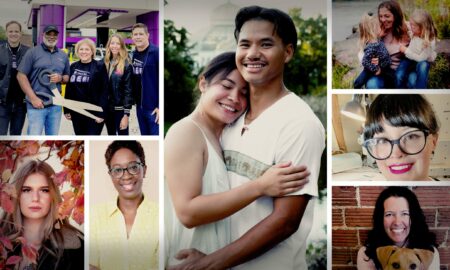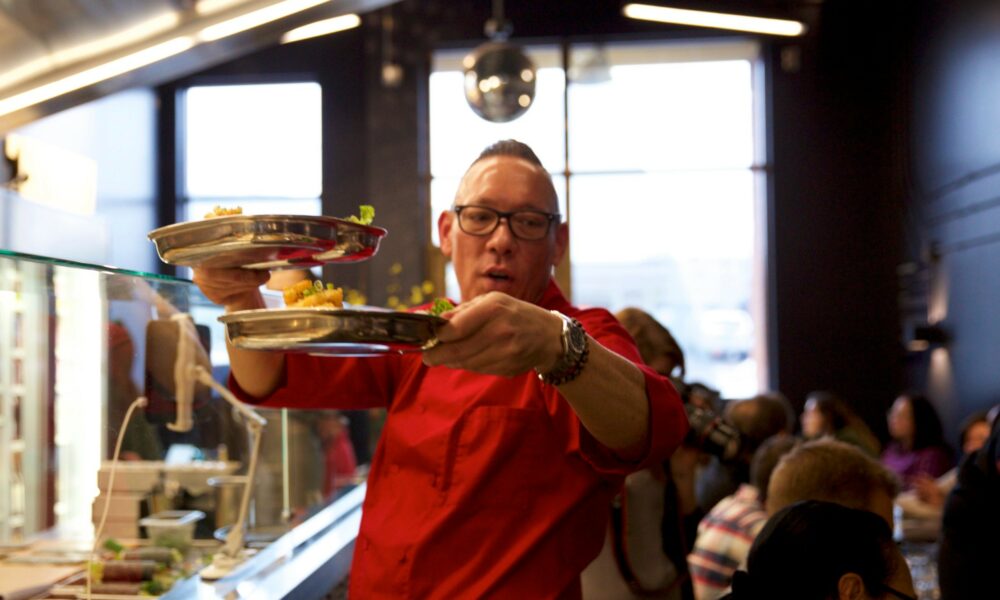

Today we’d like to introduce you to John Sugimura.
John, we appreciate you taking the time to share your story with us today. Where does your story begin?
This is the beautiful side of pain. This is personal.
杉村 “Sansei” Japanese American
洗う “Nisei” Japanese Trained Chef
祝値 Celebrating Japanese Values
警備 Guarding Japanese Nuances
料理 Japanese Roots Cooking
横著 Japanese “Yokocho” Food
I am a third generation Japanese American and second-generation professionally trained chef preparing truly authentic and complex Japanese food with over 10 years of rigorous experience. I am celebrating Japanese values and nuances in roots cooking; I cook to reconnect to my Japanese grandmother chef who lost everything when she and my dad were unjustly incarcerated during WW2 in the Tule Lake internment camp. They experienced incarceration behind barbed wire while living in barracks. Four-and-a-half years later, my family left the war camp with 2 pieces of luggage.
I meet the “SILVER” standards for “Certification of Cooking Skills for Japanese Cuisine in Foreign Countries” by the Ministry of Agriculture, Forestry and Fisheries. At the Japanese Embassy in Washington, D.C., it’s being referred to as “Japanese Cuisine Skills Certification Guidelines.” To be eligible for the “Certification of Cooking Skills for Japanese Cuisine in Foreign Countries”: I meet the Japanese nationality requirement; I have practical experience in Japanese restaurants located in Japan; and I trained at the prestigious Japanese culinary school the Sushi Institute of America, completing lessons, and acquiring culturally authentic knowledge. I am a chef cooking Japanese classics with true spirit, fresh flavors, and ingredients in various settings across the United States. I am skilled to uphold the values of traditional Japanese cuisine, known as “Washoku” and skilled to reverse widespread misperceptions that Japanese authorities would like to correct. In 2013, “Washoku” became one of only a handful of cuisines to be recognized by UNESCO as an Intangible Cultural Heritage.
My life-long passion for my Japanese American heritage erupted from a single instance of racism in the 8th grade that forever changed me. I live with the sting of racism today. I am a daring advocate and soldier with the courage for the culturally accurate retelling of the Japanese American experience. I became a skilled chef to celebrate and guard the values of traditional Japanese cuisine through my travel in Japan and advanced culinary training. Eating my cuisine is like eating in my grandmother’s restaurant in the 1930s. It is the ultimate expression of flavors, colors, and cooking methods, coming together in an authentic experience that is one-of-a-kind. I tell my story with food.
“Tasting Japan Tour” Rooted in Food Access and Strengthening Social Competence
I am executing culinary perspective to share authentic and healthier Japanese cuisine in a school food program. The “Tasting Japan Tour” successfully carves out moments to celebrate normalcy as a respite from the world today, ignite students’ curiosity to include Japan, and honor the joy of food. My goal is to unite and strengthen the school community to promote individual identity among students. The incremental successes of human connection during foodie-fun builds social competence. I deliver culturally authentic Japanese cuisine that tells a story and levels the playing field to practice compassion, serving others with empathy, respect, and dignity.
Using my roots cooking, I passionately promote fair food access, systems, sovereignty, and functionality with my popular high-integrity and restaurant-quality Japanese alley food cuisine while working from within the control of the food systems all while making my Japanese American grandmother chef proud.
I have celebrated and supported America’s food culture in school programs across the country for over three years. My “Tasting Japan Tour” champions a new standard of exceptional food and inclusivity accessing 87 urban, suburban, and rural communities in 21 states (Great Lakes, Midwest, Mountain, Southeast, Southwest, and Texas) and sparking the explosion of a healthy Japanese food innovation to over 65,000 students, faculty, and community stakeholders to date.
As a traditional Japanese chef, I am empowered by my food ally Taher, Inc. Professional Food Management, “The Food People,” to bring excitement and passion for fresh, high-quality ingredients, scratch cooking, and authentic Japanese recipes to promote wellness across the country. My motivation is fueled being the trailblazer to educate and improve school kitchen staff in what is traditionally a heat/serve and scoop/dump kitchen, so they are understanding the benefits of serving spectacular culturally authentic Japanese food. I serve as a self-identified ambassador to demonstrate by shoulder-to-shoulder leadership among hundreds of my food colleagues to deepen the commitment to scratch cooking using traditional Japanese methods and techniques. I am a highly respected chef because of my ability to customize training to match learning styles that fosters respect and strengthens community in the kitchen for employees. With my collaborator Taher, Inc., I am able to serve Asian and Pacific Islander food that reflects the world and recognizes and respects the long history of Asian/Pacific Americans. To meet enthusiasm and demand, the tour will grow to 450 communities in 25 states this year. The initiative “Tasting Japan Tour” quickly became the most recognized and celebrated food access project in the company’s 40-year history.
Over 5 years ago, I started with my brainchild and locally treasured restaurant “PinKU” Japanese Street Food serving fresh fish and produce prepared in an open kitchen in the spirit of my immigrant grandmother chef with the values of harmony, respect, purity, and tranquility promote the true spirit of Japanese cuisine and traditional sushi. My menu is sold 20-30% below the competition to ensure access to good food. The small, curated menu is prepared with the certified “Silver Standards” of Japanese cooking that uphold the values of traditional Japanese cuisine, known as “Washoku,” right in Northeast Minneapolis. “PinKU” Japanese Street Food is the highest rated Google, Facebook, and Yelp Japanese restaurant in the country.
I am the corporate executive chef and brand director at “PinKU” Japanese Street Food by Chef John Sugimura at the Minneapolis-St. Paul International Airport which is the top North America airport. I have set new standards serving culturally authentic cuisine in airport food to tens of thousands of domestic and international travelers every day.
On numerous occasions throughout the month, I share my passion for Japanese food with hands on learning and culture as a National Restaurant Association ProStart educator and Food and Culinary Science instructor to help guide students in their career planning. This gives them an advantage in their food industry career.
Beginning in 2020, I joined Christopher Kimball’s MILKS STREET cooking school as an instructor to share authentic Japanese recipes highlighting proper ingredients, methods and techniques.
I use my craft for good, and I use my good food to support my principles. I have raised over $100,000 for charity to reduce the impact of poverty on children, protect domestic violence victims, and ensure access to education in Africa.
In 2022, my new dual-chef and dual-cuisine will launch in Nashville.
I’m sure you wouldn’t say it’s been obstacle free, but so far would you say the journey have been a fairly smooth road?
My life is a celebration of everything Japanese. I cook to make Japan easier to understand, keep Japanese Americans socially relevant, and promote Japanese urbanity. I tell my story. I am a second-generation chef, third-generation Japanese American and professionally trained sushi chef. I have advanced my culinary practice through my continuing study and travel to Japan. I celebrate and guard the values of traditional Japanese cuisine and highlight often overlooked traditional nuances in my preparations. My food is the ultimate expression of flavors, colors and cooking methods coming together in an authentic experience that is one of a kind.
I am inspired by my widowed grandmother’s resiliency. Following the loss of my grandfather after immigrating to the U.S., my grandmother saw food as a way of providing for her young family. She opened a restaurant in Sacramento, California, in the 1930s to support her family during a time when few women ran or owned successful businesses.
By the spring of 1942, 120,000 American citizens of Japanese descent were “sent to” hastily built assembly centers. My family was unjustly incarcerated during World War II, being forced into the Tule Lake Segregation Center. They experienced detention behind barbed wire while living in barracks. Four and a half years later, my family left the war camp with five pieces of luggage. I share in the history of the incarceration experience. I am part of a resurgence of passion and ownership in a telling of the story, primarily as a descendant. My elders have left me with many unanswered questions. Retelling stories provides invaluable lessons for us today. They let us see through the lens of human nature, both good and evil. With the current rise in anti-Asian violence, fueled again by scapegoating and a perpetual foreigner mentality, it is painfully clear that the struggle for recognition of legitimacy and inclusion is still relevant.
Two generations and three quarters of a century later, I am picking up where my grandmother left off. I grew up in a mixed-race family. For many years, I had a sense of cultural limbo that characterized my life. But even after many years of visiting Japan, a semester of Japanese at college and countless questions to my father, I still didn’t feel like I was getting the answers I needed.
With Japanese Americans, there’s a term called Gaman, referring to the Japanese Buddhist phrase translating as “to endure the unbearable with patience and grace.” Gaman means you’re in the war camps, you lost everything, you lost people … but then World War II is over; you’re not a victim. Smile. Move on. This stoic nature adopted by my family meant that much of the history I wanted to engage with was either lost or hidden from memory. However, one aspect of my family life stood out above everything else. I didn’t look Japanese, and I didn’t act Japanese. Food was the one thing that outed me.
I began to delve deeper and deeper into the history of Japanese Americans through the heritage of food. In 2008, I enrolled in the Sushi Institute of America, now known as the Miyako Sushi and Washoku School in Little Tokyo, the heart of the largest Japanese American population in North America. The school is affiliated with the Japan Culinary Arts institute in Tokyo. I specialized in sushi, and when I graduated as a Silver-certified chef, I returned to Minneapolis ready to share my food. Now a fully trained Japanese chef, I began to see my world open up. As more and more stories started to rise to the surface, my grandmother’s memories and the war deeply intertwined with food. At the end of the day, I get pleasure from seeing the support I have gained from challenging stereotypes through cuisine. People in the world want to eat food that has a story!
Eating my food is like eating in my grandmother’s restaurant in the 1930s. So, in homage to the grandmother, I love but never met, I serve my Japanese-roots signature items on her platter as a hug and nod to my true inspiration. I find comfort in exploring the thing we have in common and strive to create great food that would make my grandmother proud. That’s always the measure!
We’ve been impressed with PinKU Japanese Street Food, but for folks who might not be as familiar, what can you share with them about what you do and what sets you apart from others?
In 1917, my grandparents immigrated in their 20s to northern California from the Japanese islands of Kyushu and the Chubu region. Their dream was to set up permanent residence in the United States to start a family and business. For context, women in this country were granted the right to vote under the 19th amendment in 1920. Overcoming the loss of a husband and a child, my grandmother’s single-parent spirit persisted and that spirit has been passed on to me. Following the bombing of Pearl Harbor on December 7, 1941, like all Japanese Americans, my family faced increased hostility and discrimination. My Japanese-immigrant grandmother and her American-born children endured racial prejudice as my grandmother operated a restaurant that thrived and contributed to the community of Sacramento, California.
This landscape dramatically changed on February 19, 1942 when President Franklin D. Roosevelt signed Executive Order 9066. The order cleared the way for the forced removal of all Japanese Americans from the west coast. By the spring of 1942, 120,000 Japanese-Americans were forced into hastily-built “assembly centers.” My family was forced into Tule Lake. They experienced incarceration behind barbed wire and living in barracks. In 1946, my family left the war camp with five pieces of luggage. My family eventually moved to Minnesota where I was born and raised. Our strong spirit persisted. This is our story!
Revisiting the Japanese American National Museum in Los Angeles, California in August 2017 brought back many memories about my grandparents, father, aunts, and uncles and their story. It was not that long ago my father and I strolled the museum and talked about what times were like in the camp as we walked through an exhibit on the incarceration. We talked about persistence, spirit, and opportunity. Now, extending our story to PinKU presents an opportunity many of my relatives will never see but will always be the invaluable part of.
PinKU Japanese Street Food is the ultimate expression of flavors, colors, and cooking methods in an authentic experience that is one of a kind. Japan is a sensory wonderland; its food scene is no exception and a great way to bring people together.
Our principles of Japanese cuisine and sushi: In the spirit of Chef John Sugimura’s obaasan (Grandmother Tsui, 1896-1960): harmony, respect, purity, and tranquility; promote the true spirit of Japanese cuisine and traditional sushi; educate proper techniques; and share the integrity of Japanese cuisine and sushi.
What was your favorite childhood memory?
My parents accepting me for me and reminding in small ways every day that I am loved.
Contact Info:
- Email: [email protected]
- Website: pinkujapanese.com
- Instagram: Instagram.com/johnsugimura Instagram.com/pinkujapanese
- Facebook: Facebook.com/johnsugimura Facebook.com/pinkujapanese
- Twitter: PinKUChefJohn
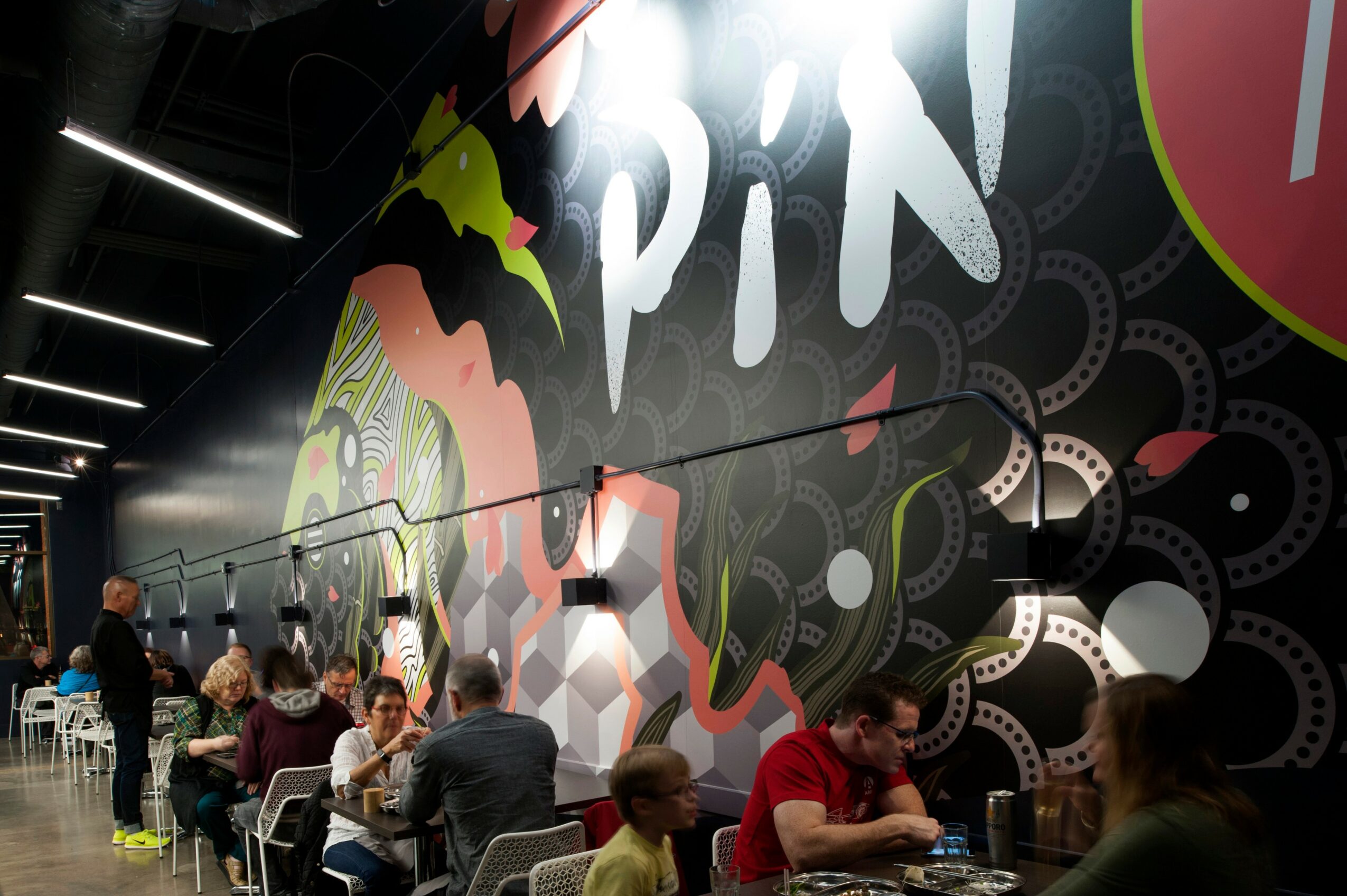
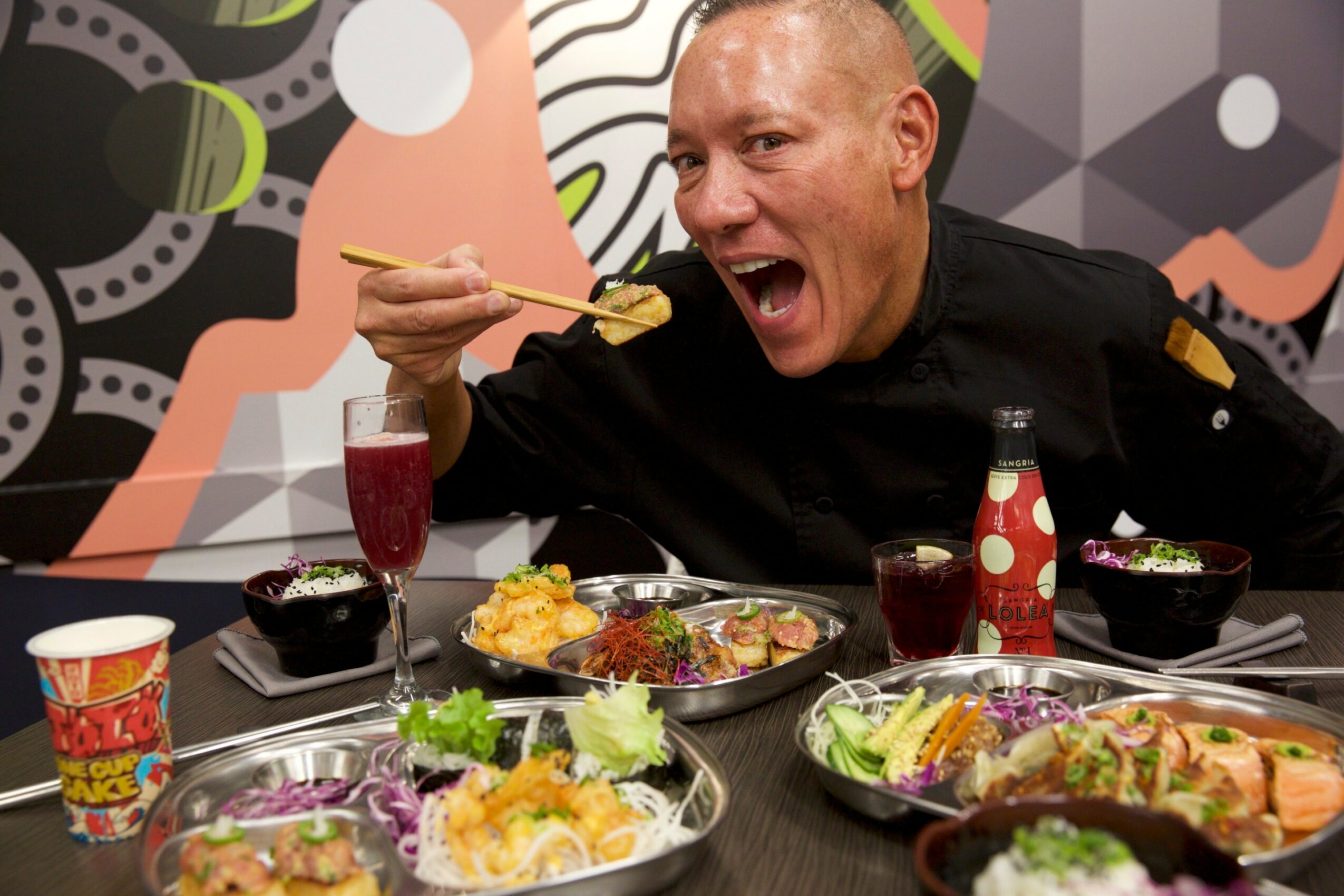
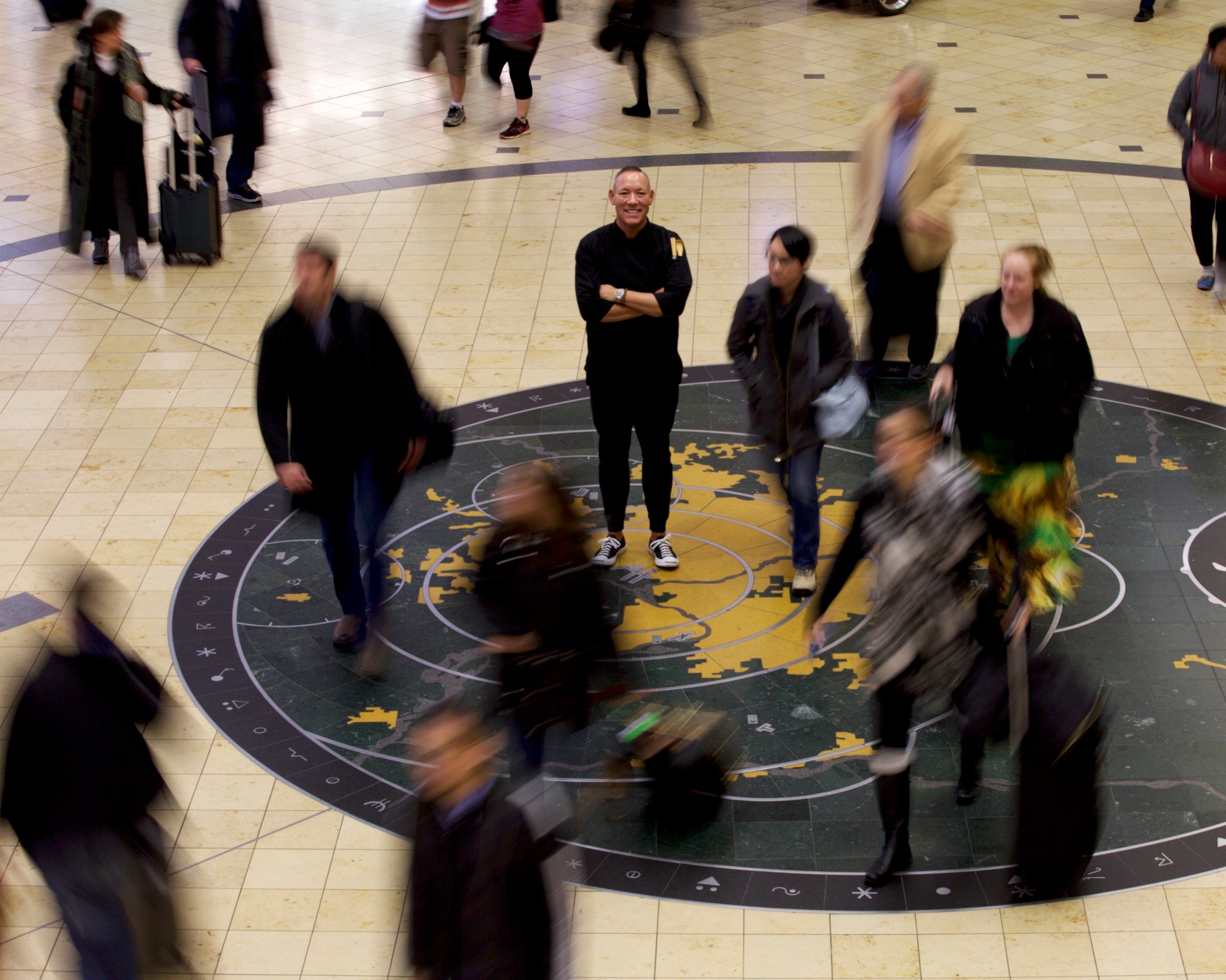
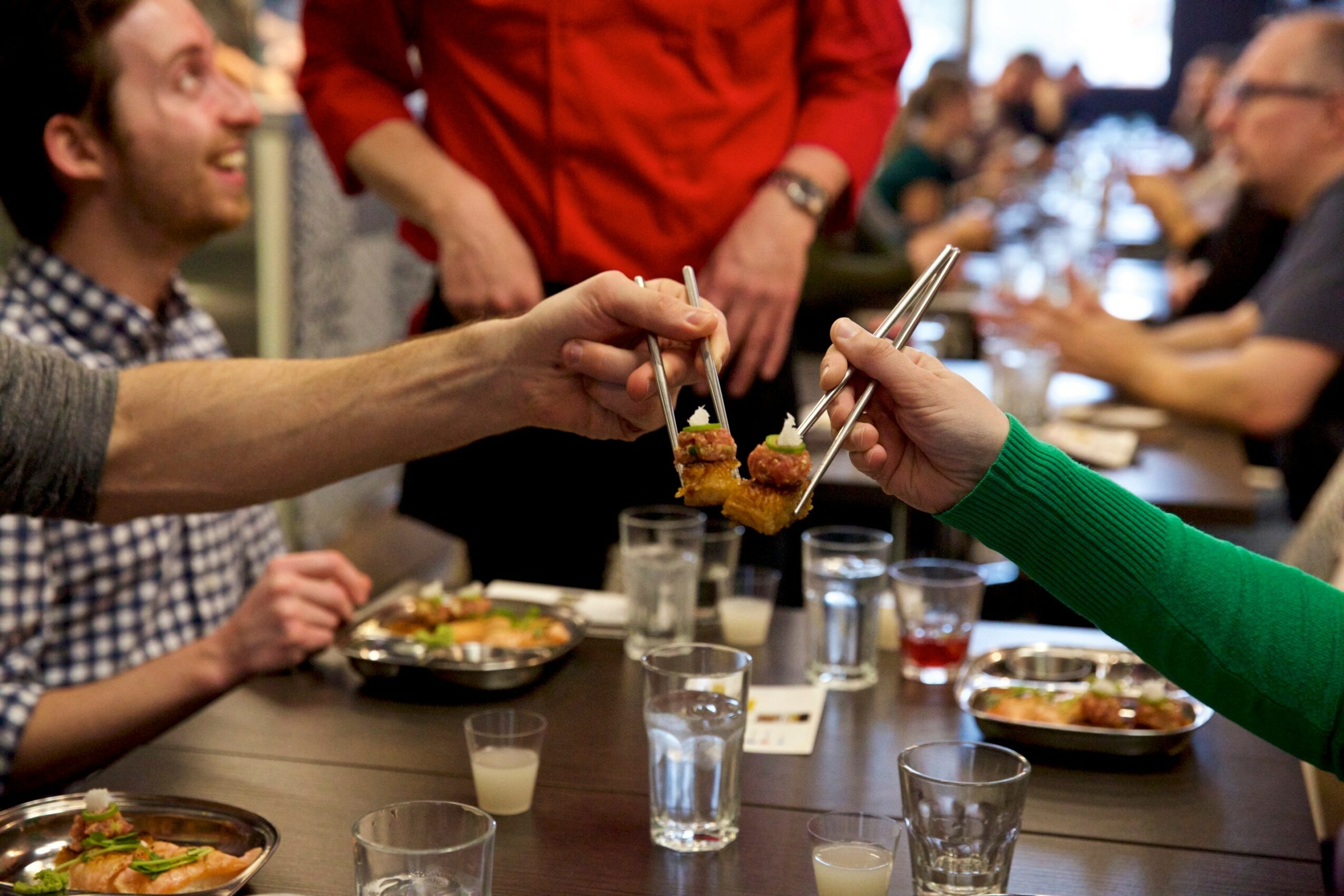

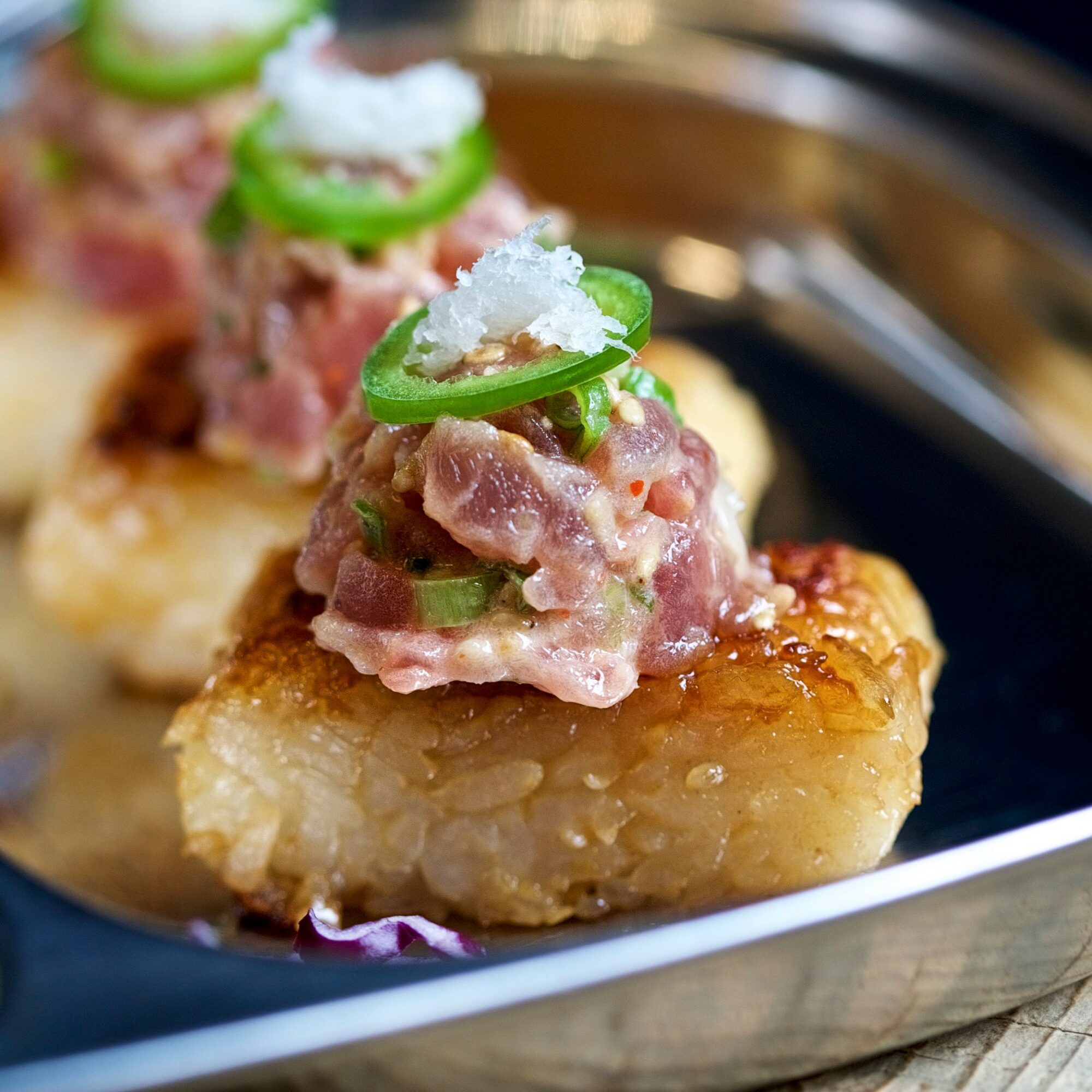
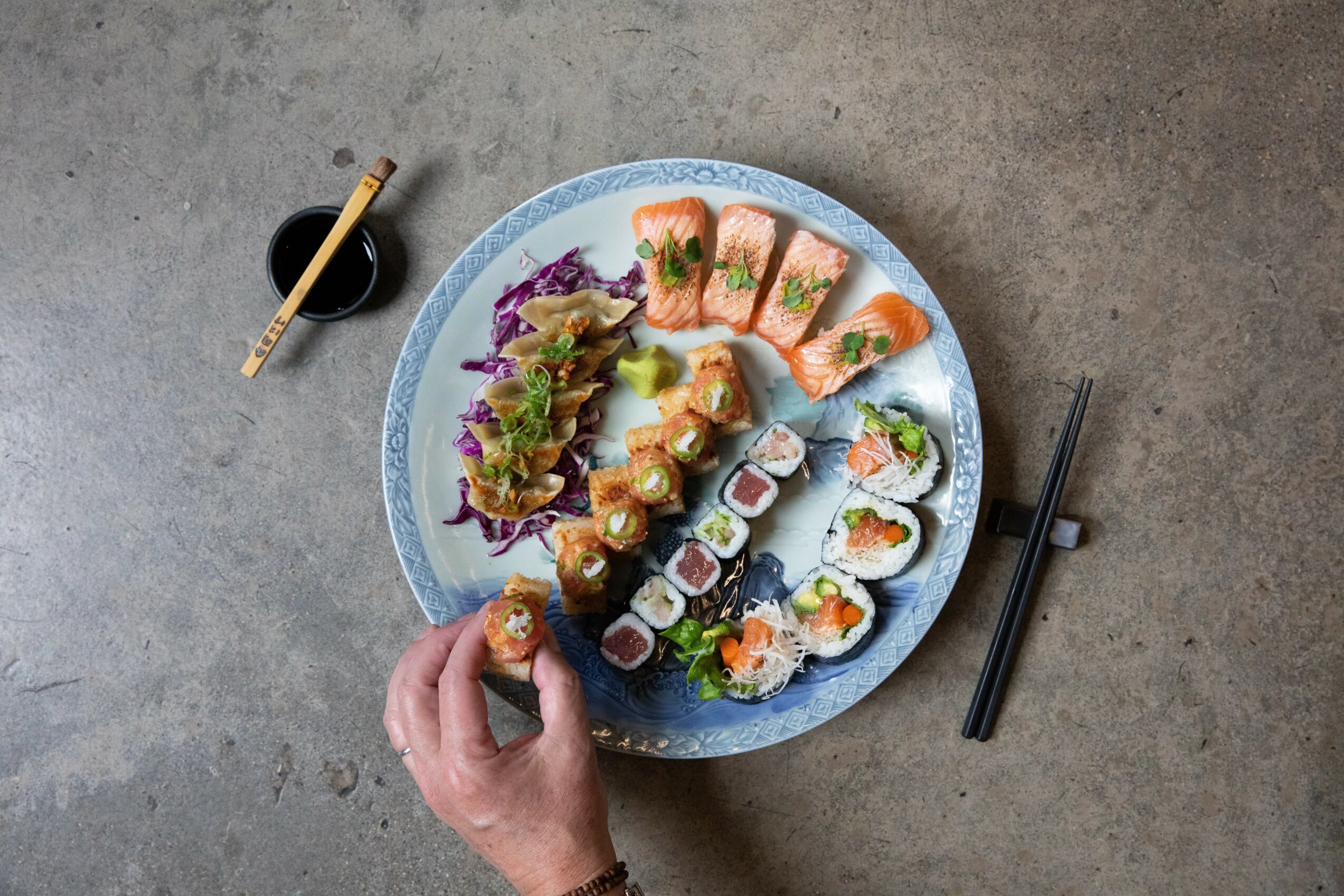
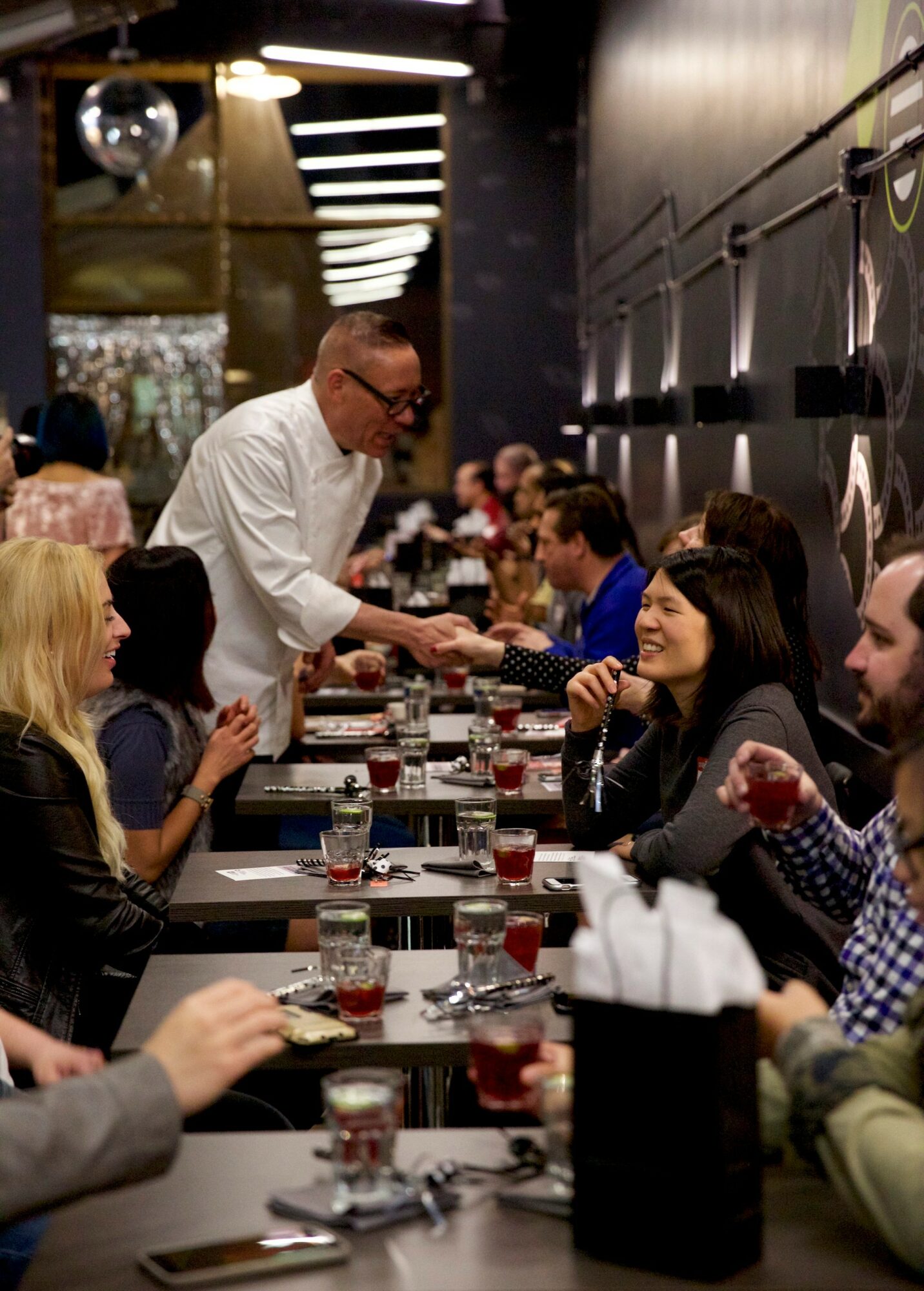
Image Credits
Asha Belk

